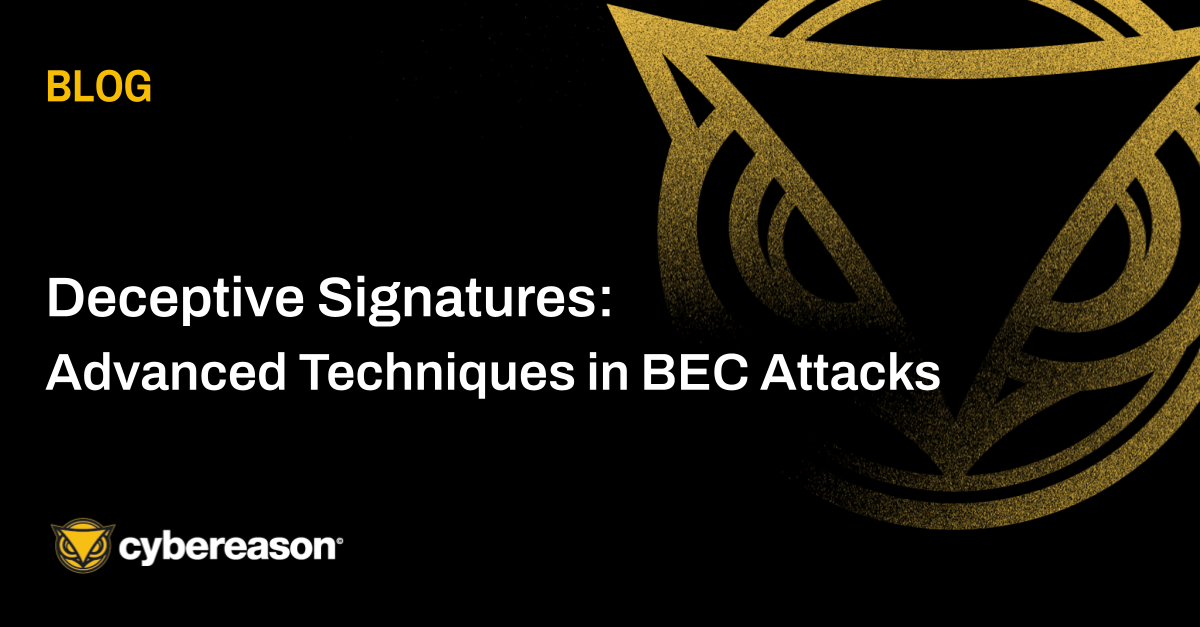
THREAT ALERT: GootLoader - SEO Poisoning and Large Payloads Leading to Compromise
In December 2022, the Cybereason Incident Response (IR) team investigated an incident which involved new deployment methods of GootLoader.

Cybereason Consulting Team
Business email compromise attacks have become increasingly common in recent years, driven by sophisticated social engineering tactics that make it easier to dupe victims. This is in part to the believability that the threat actors are able to achieve by collecting sensitive information from publicly available sources, including corporate websites and social media. Criminals leverage this information to pose as trusted colleagues or business partners, using stolen or spoofed email accounts to deliver convincing messages that prompt recipients to transfer funds or disclose confidential information. The evolving nature of these schemes is characterized by their high success rate, low technological barriers to entry for threat actors, and the substantial financial losses incurred by victim organizations. Advancements in automation, AI-driven personalization, and ready-to-use phishing kits have further accelerated the proliferation of BEC attacks, creating a lucrative marketplace for cybercriminals.
One particularly deceptive technique that the Cybereason DFIR team has recently observed involves a HTML formatted phishing email being inserted directly into an email signature block of a victim’s account. Our experts observed well crafted messages by threat actors that appear authentic by mimicking corporate branding, fonts, and color schemes, all while embedding malicious links or prompts in place of an email footer. By doing this, the threat actor is able to disguise the phishing lure so it blends in as a continuation of the legitimate email sent by the user. This technique allows threat actors to be able to increase the spread of their phishing campaign, with victims unknowingly sending phishing emails embedded in their signature every time they send a new message. By default, both Microsoft M365 and Google Workspace do not track email signature changes of individual users, but there are ways to identify these changes through manual inspection.
In recent investigations, our team observed threat actors launch various phishing campaigns within numerous compromised user email signatures. If clicked, the malicious links led to various Google Forms, prompting email recipients to enter their email and banking credentials. With those credentials, the threat actor could then compromise numerous user’s email and bank accounts. Once successful, the threat actor would compromise other organizations by using the newly compromised accounts to create new Google Forms and phishing campaigns. Below are representative screenshots demonstrating the identified tactic.

Example of an email signature alteration by a threat actor which inserted an HTML formatted email into the signature block of a user’s account.

Result of an email signature alteration by a threat actor which inserted an HTML formatted email into the signature block of a user’s account so that when any email was sent out by the user, this phishing email was appended to the sender’s email in place of where their normal signature block would appear.

The signature contained a link which redirected the user to a Google Form that collected personal information to include credentials allowing for the Threat Actor to gain additional access in furtherance of repeating their scheme and forcibly multiplying their reach and access.
Key Recommendations
Our experts compiled a list of recommendations to help protect your organization against these type of threats:

In December 2022, the Cybereason Incident Response (IR) team investigated an incident which involved new deployment methods of GootLoader.

In this Threat Analysis Report, Cybereason Security Services examines an incident on a Linux server, which saw malicious shell (bash) executions from a Java process running Apache ActiveMQ.

In December 2022, the Cybereason Incident Response (IR) team investigated an incident which involved new deployment methods of GootLoader.

In this Threat Analysis Report, Cybereason Security Services examines an incident on a Linux server, which saw malicious shell (bash) executions from a Java process running Apache ActiveMQ.
Get the latest research, expert insights, and security industry news.
Subscribe